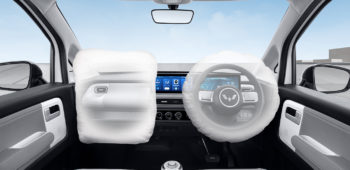Tail Lights: Functions, Types, and Maintenance Guide
28 April, 2024

Safety is the top priority when driving. Tail or car rear lights are crucial in maintaining driving safety. These small lights are critical in providing visibility and signals to other drivers, especially at night or in bad weather conditions.
More than just lights, tail lights on cars are part of the lighting system and a symbol of safety. Discover the functions, types, and how to maintain car tail lights in this article.
Understanding Tail Lights
Tail lights are an essential component of a vehicle’s lighting system located at the car’s rear. With tail lights, the vehicle becomes more visible to other drivers on the road, especially at night or in poor weather conditions such as rain or dense fog. Additionally, tail lights provide signals to other drivers, whether when braking, turning, or changing lanes.
Tail lights are considered vital to vehicle safety due to their crucial role in signaling to other drivers on the road. Without adequately functioning tail lights, the risk of accidents or collisions can significantly increase.

Types of Tail Lights
-
Conventional Tail Lights
Conventional tail lights utilize incandescent bulbs as their light source. Despite being around for a long time, they are still commonly found on older vehicles.
-
LED Tail Light
LED tail lights utilize light-emitting diodes (LEDs) as their light source. They are more energy-efficient, durable, and produce brighter, clearer light than conventional tail lights. These tail lights boast futuristic and unique designs and are equipped with advanced LED technology that enhances visibility and driving safety.
-
Adaptive Tail Lights
Adaptive tail lights utilize advanced sensors and technology to dynamically adjust the intensity and pattern of light output based on prevailing road conditions and surroundings. This innovative lighting system enhances driving safety by providing superior visibility and clearer signals to fellow motorists.
Maintaining Your Car’s Tail Lights
-
Regular Cleaning
Regularly clean your car’s tail lights to remove dust, dirt, and insects that can obstruct light emission. Use a mild detergent and soft cloth to avoid scratching the lenses.
-
Electrical Connection Check
Ensure that the cables connected to the tail lights are in good condition and free of any short circuits. Additionally, periodically check the functionality of the brake lights, turn signals, and reverse lights.
-
Additional Maintenance for LED or Adaptive Tail Lights
If your vehicle is equipped with LED tail lights, make sure to periodically inspect the LED condition and look for any signs of damage or performance degradation. Follow the owner’s manual for specific LED tail light maintenance instructions, which may include lens cleaning or firmware updates.
By following these additional maintenance guidelines for LED or adaptive tail lights, you can keep your vehicle’s advanced lighting systems functioning at their best, contributing significantly to your driving safety.
These Horizon Skyline Tail Lights are now featured on the Cloud EV electric car, which prioritizes the safety and comfort of car owners through the #CloudComfort experience. With Cloud EV, car owners can enjoy a safe and stylish driving experience!



